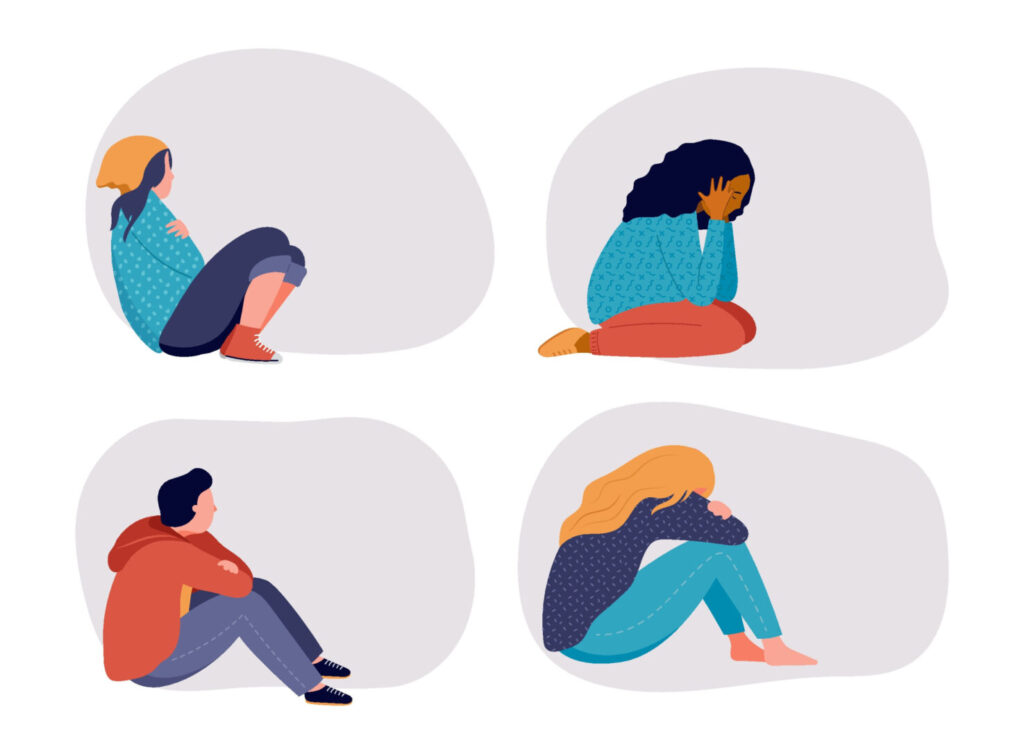Eating disorders like anorexia nervosa (AN), bulimia nervosa (BN), and binge-eating disorder (BED) typically begin in adolescence, but they are increasingly seen in younger children.
Researchers have linked the rise of eating disorders in children and teens to the pandemic and the ongoing youth mental health crisis, among other stressors.1 2 Social media may also play a role in driving body image dissatisfaction and negative comparison among teens.3 What’s more, children and teens with conditions like anxiety, depression, and attention deficit hyperactivity disorder (ADHD) are at greater risk for developing eating disorders.4 , 5
Eating disorders are complex but treatable conditions. Early detection greatly improves recovery and health outcomes.
If you are concerned that your child is showing signs of an eating disorder like AN, BN, or BED, answer the questions below and share the results with your child’s pediatrician or a licensed mental health professional who is experienced in diagnosing and treating eating disorders.
If you or a loved one are suffering from an eating disorder, visit the National Eating Disorder Association (NEDA) website at www.nationaleatingdisorders.org for support and resources.
This self-test was adapted from materials provided in “Identification and Management of Eating Disorders in Children and Adolescents” published by the American Academy of Pediatrics. It is designed to screen for the possibility of eating disorders like AN, BN, and BED in children and teens, and it is for personal use only. This test is not intended as a diagnostic tool. Only a licensed mental health professional can diagnose eating disorders.
Can’t see the self-test questions above? Click here to open this test in a new window.
Eating Disorders in Children and Teens: Next Steps
View Article Sources
1 Asch, D. A., Buresh, J., Allison, K. C., Islam, N., Sheils, N. E., Doshi, J. A., & Werner, R. M. (2021). Trends in US Patients Receiving Care for Eating Disorders and Other Common Behavioral Health Conditions Before and During the COVID-19 Pandemic. JAMA network open, 4(11), e2134913. https://doi.org/10.1001/jamanetworkopen.2021.34913
2 Office of the Surgeon General (OSG). (2021). Protecting Youth Mental Health: The U.S. Surgeon General’s Advisory. US Department of Health and Human Services.
3 Charmaraman, L., Richer, A. M., Liu, C., Lynch, A. D., & Moreno, M. A. (2021). Early Adolescent Social Media-Related Body Dissatisfaction: Associations with Depressive Symptoms, Social Anxiety, Peers, and Celebrities. Journal of developmental and behavioral pediatrics : JDBP, 42(5), 401–407. https://doi.org/10.1097/DBP.0000000000000911
4 Nazar, B. P., Bernardes, C., Peachey, G., Sergeant, J., Mattos, P., & Treasure, J. (2016). The risk of eating disorders comorbid with attention-deficit/hyperactivity disorder: A systematic review and meta-analysis. The International journal of eating disorders, 49(12), 1045–1057. https://doi.org/10.1002/eat.22643
5 National Institute of Mental Health. Eating disorders. U.S. Department of Health and Human Services. https://www.nimh.nih.gov/health/statistics/eating-disorders
Save
Previous Article
Next Article

